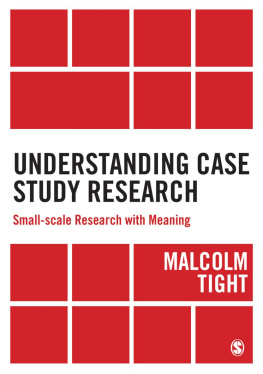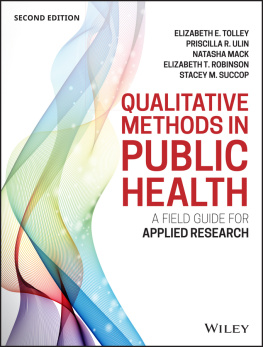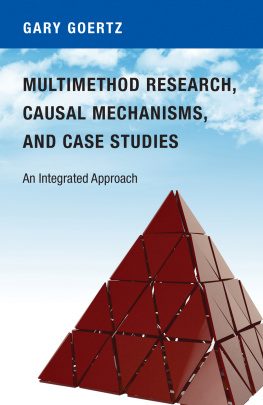Yin - Case study research : design and methods
Here you can read online Yin - Case study research : design and methods full text of the book (entire story) in english for free. Download pdf and epub, get meaning, cover and reviews about this ebook. City: London, year: 2015, publisher: Sage Publication, genre: Politics. Description of the work, (preface) as well as reviews are available. Best literature library LitArk.com created for fans of good reading and offers a wide selection of genres:
Romance novel
Science fiction
Adventure
Detective
Science
History
Home and family
Prose
Art
Politics
Computer
Non-fiction
Religion
Business
Children
Humor
Choose a favorite category and find really read worthwhile books. Enjoy immersion in the world of imagination, feel the emotions of the characters or learn something new for yourself, make an fascinating discovery.
Case study research : design and methods: summary, description and annotation
We offer to read an annotation, description, summary or preface (depends on what the author of the book "Case study research : design and methods" wrote himself). If you haven't found the necessary information about the book — write in the comments, we will try to find it.
Yin: author's other books
Who wrote Case study research : design and methods? Find out the surname, the name of the author of the book and a list of all author's works by series.
Case study research : design and methods — read online for free the complete book (whole text) full work
Below is the text of the book, divided by pages. System saving the place of the last page read, allows you to conveniently read the book "Case study research : design and methods" online for free, without having to search again every time where you left off. Put a bookmark, and you can go to the page where you finished reading at any time.
Font size:
Interval:
Bookmark:
Case Study
Research This book is dedicated to Hans-Lukas Teuber, who made research a lifelong goal for all who studied with him.Case Study
ResearchDesign and Methods



FOR INFORMATION:
SAGE Publications, Inc.
2455 Teller Road
Thousand Oaks, California 91320
E-mail:
SAGE Publications Ltd.
1 Olivers Yard
55 City Road
London EC1Y 1SP
United Kingdom
SAGE Publications India Pvt. Ltd.
B 1/I 1 Mohan Cooperative Industrial Area
Mathura Road, New Delhi 110 044
India
SAGE Publications Asia-Pacific Pte. Ltd.
3 Church Street
#10-04 Samsung Hub
Singapore 049483
Acquisitions Editor: Vicki Knight
Editorial Assistant: Jessica Young
Assistant Editor: Kalie Koscielak
Production Editor: Brittany Bauhaus
Copy Editor: Gillian Dickens
Typesetter: C&M Digitals (P) Ltd.
Proofreader: Theresa Kay
Indexer: Rick Hurd
Cover Designer: Edgar Abarca
Marketing Manager: Nicole Elliott
Permissions Editor: Karen Ehrmann
Copyright 2014 by SAGE Publications, Inc.
All rights reserved. No part of this book may be reproduced or utilized in any form or by any means, electronic or mechanical, including photocopying, recording, or by any information storage and retrieval system, without permission in writing from the publisher.
Printed in the United States of America
Library of Congress Cataloging-in-Publication Data
Yin, Robert K.
Case study research : design and methods / Robert K. Yin. Fifth edition.
pages cm.
Includes bibliographical references and index.
ISBN 978-1-4522-4256-9 (pbk.: alk. paper)
ISBN 978-1-4833-0200-3 (web pdf) 1. Case method.
2. Social sciencesResearch--Methodology. I. Title.
| H62.Y56 2014 | |
| 300.722dc23 | 2013008876 |
This book is printed on acid-free paper.
13 14 15 16 17 10 9 8 7 6 5 4 3 2 1
B RIEF C ONTENTS
D ETAILED C ONTENTS
Donald T. CampbellA BOUT THE A UTHOR
Robert K. Yin is President of COSMOS Corporation, an applied research and social science firm. Over the years, COSMOS has successfully completed hundreds of projects for federal agencies, state and local agencies, and private foundations, and most of this books applications come from these projects.
Outside of COSMOS, Dr. Yin has assisted numerous other research groups, helping to train their field teams or to design research studies. Recent engagements have been with evaluation teams at The World Bank and the United Nations Development Programme. Another assignment has been to provide guidance to assist doctoral students at the University of Copenhagen. Currently, Dr. Yin holds the position of distinguished scholar-in-residence at American Universitys School of International Service (Washington, D.C.). Earlier, he served as Visiting Scholar at the U.S. Government Accountability Offices research methodology division.
Dr. Yin has authored over 100 journal articles, reports, and books. His first book on the case study method, Case Study Research: Design and Methods (2014), is in its fifth edition. A companion book, Applications of Case Study Research (2012), is in its third edition. He has edited two case study anthologies (Yin, 2004, 2005) and has most recently authored a new text on qualitative research methods (Yin, 2011). Dr. Yin received his B.A. in history from Harvard College (magna cum laude) and his Ph.D. in brain and cognitive sciences from MIT.
F OREWORD
I t is a privilege to provide the foreword for this fine book. It epitomizes a research method for attempting valid inferences from events outside the laboratory while at the same time retaining the goals of knowledge shared with laboratory science.
More and more I have come to the conclusion that the core of the scientific method is not experimentation per se but rather the strategy connoted by the phrase plausible rival hypotheses. This strategy may start its puzzle solving with evidence, or it may start with hypothesis. Rather than presenting this hypothesis or evidence in the context-independent manner of positivistic confirmation (or even of postpositivistic corroboration), it is presented instead in extended networks of implications that (although never complete) are nonetheless crucial to its scientific evaluation.
This strategy includes making explicit other implications of the hypotheses for other available data and reporting how these fit. It also includes seeking out rival explanations of the focal evidence and examining their plausibility. The plausibility of these rivals is usually reduced by ramification extinction, that is, by looking at their other implications on other data sets and seeing how well these fit. How far these two potentially endless tasks are carried depends on the scientific community of the time and what implications and plausible rival hypotheses have been made explicit. It is on such bases that successful scientific communities achieve effective consensus and cumulative achievements, without ever reaching foundational proof. Yet, these characteristics of the successful sciences were grossly neglected by the logical positivists and are underpracticed by the social sciences, quantitative or qualitative.
Such checking by other implications and the ramification-extinction of rival hypotheses also characterizes validity-seeking research in the humanities, including the hermeneutics of Schleiermacher, Dilthey, Hirst, Habermas, and current scholarship on the interpretation of ancient texts. Similarly, the strategy is as available for a historians conjectures about a specific event as for a scientists assertion of a causal law. It is tragic that major movements in the social sciences are using the term hermeneutics to connote giving up on the goal of validity and abandoning disputation as to who has got it right. Thus, in addition to the quantitative and quasi-experimental case study approach that Yin teaches, our social science methodological armamentarium also needs a humanistic validity-seeking case study methodology that, although making no use of quantification or tests of significance, would still work on the same questions and share the same goals of knowledge.
As versions of this plausible rival hypotheses strategy, there are two paradigms of the experimental method that social scientists may emulate. By training, we are apt to think first of the randomized-assignment-to-treatments model coming to us from agricultural experimentation stations, psychological laboratories, randomized trials of medical and pharmaceutical research, and the statisticians mathematical models. Randomization purports to control an infinite number of rival hypotheses without specifying what any of them are. Randomized assignment never completely controls these rivals but renders them implausible to a degree estimated by the statistical model.
The other and older paradigm comes from physical science laboratories and is epitomized by experimental isolation and laboratory control. Here are the insulated and lead-shielded walls; the controls for pressure, temperature, and moisture; the achievement of vacuums; and so on. This older tradition controls for a relatively few but explicitly specified rival hypotheses. These are never controlled perfectly, but well enough to render them implausible. Which rival hypotheses are controlled for is a function of the disputations current in the scientific community at the time. Later, in retrospect, it may be seen that other controls were needed.
Next pageFont size:
Interval:
Bookmark:
Similar books «Case study research : design and methods»
Look at similar books to Case study research : design and methods. We have selected literature similar in name and meaning in the hope of providing readers with more options to find new, interesting, not yet read works.
Discussion, reviews of the book Case study research : design and methods and just readers' own opinions. Leave your comments, write what you think about the work, its meaning or the main characters. Specify what exactly you liked and what you didn't like, and why you think so.







